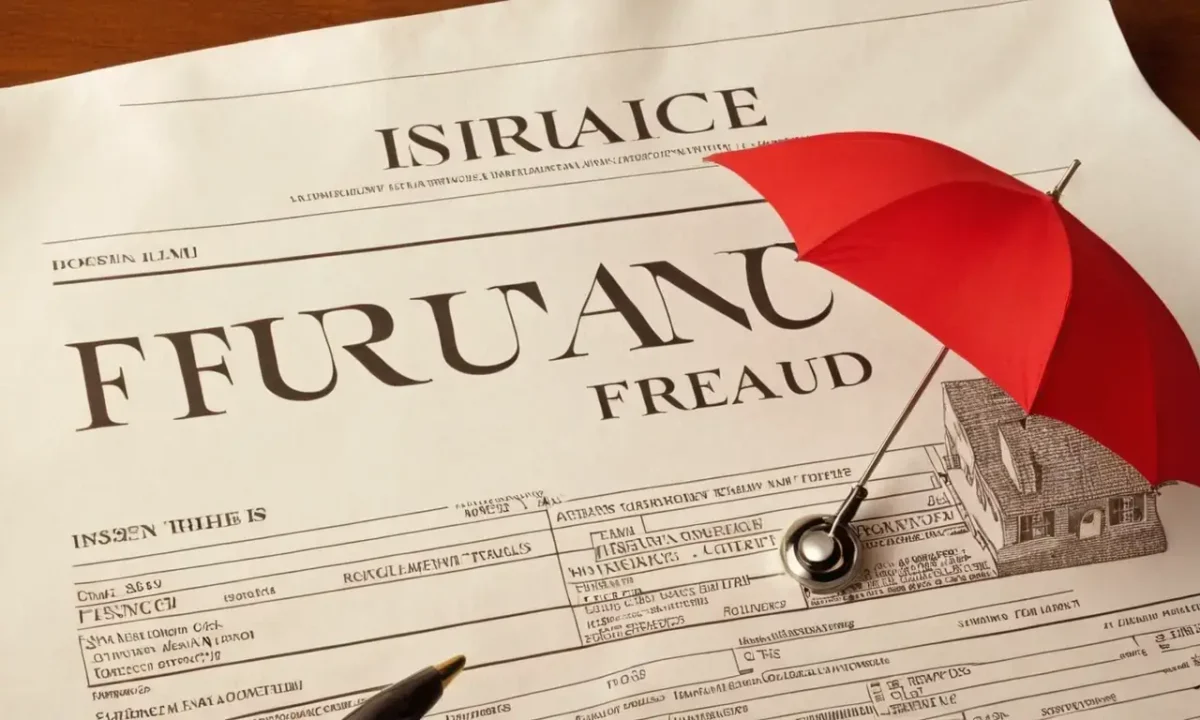Insurance Fraud: Detection Methods and Consequences

Insurance fraud is a pervasive issue that affects not only insurance companies but also consumers, who ultimately bear the financial burden of these scams. The problem is so significant that it's estimated that 10% of all insurance claims are fraudulent, resulting in billions of dollars lost each year. To combat this issue, insurance companies employ various methods to detect and prevent public adjuster scams.
The consequences of insurance fraud can be severe, including financial losses for consumers and increased premiums for honest policyholders. It's essential for individuals to understand the tactics used by insurance companies to detect and prevent these scams, as well as the importance of working with reputable agents and carefully reviewing policies and claims. This article will delve into the world of insurance fraud detection methods, consequences, types, and prevention strategies.
Insurance Fraud Statistics
Insurance fraud is a significant problem in the United States, with billions of dollars lost each year. According to the Coalition Against Insurance Fraud, the total cost of insurance fraud in 2020 was estimated at $80 billion. This staggering figure highlights the need for effective detection methods to prevent these scams. The same coalition estimates that 10% of all insurance claims are fraudulent, which translates to millions of dollars lost annually.
The statistics on insurance fraud vary by type of insurance. For example, auto insurance fraud accounts for a significant portion of total losses, with staged accidents and exaggerated claims being common tactics used by scammers. Homeowners' insurance fraud also poses a substantial risk, often involving inflated or false claims related to property damage. Understanding these statistics is crucial in developing effective strategies to combat insurance fraud.
Detection Methods
Insurance companies use various methods to detect and prevent iso claimsearch for attorneys. One such method is the use of anti-fraud information systems like ISO ClaimSearch, which cross-checks new claims against a database of over 1 billion claims from thousands of insurance companies, self-insured entities, and third-party administrators. This system helps identify staged-accident rings, individuals submitting multiple claims for the same loss, and other scams.
Another detection method involves investigating suspicious claims. Adjusters review claims for inconsistencies and red flags, such as discrepancies in the claimant's story or evidence of prior knowledge about the incident. Insurance companies also use data analytics to analyze large datasets and identify patterns that may indicate fraud. This can include analyzing claim frequency, severity, and location to pinpoint areas where fraudulent activity is more likely.
Consequences of Insurance Fraud
The consequences of insurance fraud are far-reaching and can have a significant impact on both consumers and the insurance industry as a whole. For consumers, the financial burden of insurance fraud can be substantial, leading to increased premiums for honest policyholders. This means that those who do not engage in fraudulent activities may end up paying more for their policies.
Furthermore, insurance fraud can lead to a decrease in trust between consumers and insurance companies. When individuals feel that they are being taken advantage of through scams, it can erode the relationship between them and their insurers. This can result in decreased customer satisfaction and loyalty, ultimately affecting the reputation of the insurance company.
Types of Insurance Fraud

Insurance fraud can take many forms, including one spot insurance claims, where individuals claim to have suffered a loss on a single item or policy, when in reality they are attempting to scam the system. Another common tactic is staged accidents, where individuals intentionally cause an accident and then file a false claim for damages.
Jewelry insurance claim investigation is another area of concern, as scammers often target high-value items like jewelry. These claims can be particularly difficult to investigate due to the subjective nature of valuing these items. Insurance companies must carefully review these claims to ensure that they are legitimate and not part of a larger scam.
Investigating Suspicious Claims
When investigating suspicious claims, insurance adjusters follow a systematic approach to verify the authenticity of the claim. This involves reviewing all documentation provided by the claimant, including receipts, witness statements, and medical records. Adjusters also conduct interviews with the claimant and any witnesses to gather more information about the incident.
During this process, adjusters look for inconsistencies in the claimant's story or evidence that suggests the claim is fabricated. For example, if a claimant provides a receipt for an item that was allegedly damaged but the receipt shows no signs of damage, it may raise suspicions. Adjusters must be thorough and meticulous in their investigation to ensure that they do not miss any red flags.
Data Analytics in Insurance Fraud Detection
Data analytics plays a crucial role in insurance fraud detection. By analyzing large datasets, insurance companies can identify patterns and anomalies that may indicate fraudulent activity. This can include analyzing claim frequency, severity, and location to pinpoint areas where fraudulent activity is more likely.
For instance, if an insurance company notices that there are a high number of claims from a specific geographic area within a short period, it may be indicative of a scam. Similarly, if the data shows that certain types of claims are being filed at an unusually high rate, it could suggest that individuals are attempting to exploit loopholes in the system.
Background Checks for Claimants
Insurance companies also conduct background checks on claimants as part of their fraud detection efforts. This involves verifying the identity and history of the individual making the claim. By checking public records and conducting interviews with neighbors or acquaintances, insurers can gain a better understanding of the claimant's character and potential motives.
Background checks are particularly useful in cases where there is suspicion of staged accidents or other forms of insurance fraud. If a claimant has a history of filing false claims or engaging in similar activities, it may raise red flags for the insurer. This information can be used to inform the investigation process and ensure that the claim is thoroughly reviewed.
Insurance companies are increasingly using social media monitoring as part of their fraud detection strategies. By tracking online activity related to insurance claims, insurers can identify potential scams before they escalate. For example, if a claimant posts about an accident on social media but the details do not match the information provided in the claim, it may indicate that the claim is fabricated.
Social media monitoring also allows insurers to track patterns of behavior among individuals who are suspected of engaging in insurance fraud. If multiple claims from the same individual or group show similar characteristics, such as exaggerated damages or suspicious circumstances, it can be a red flag for further investigation.
Prevention Strategies
Preventing insurance fraud requires a multi-faceted approach that involves both insurers and consumers. One effective strategy is education: educating consumers about the risks of insurance fraud and how to avoid falling victim to scams. This includes providing clear information on what constitutes legitimate claims and how to report suspicious activity.
Insurance companies can also implement robust verification processes for claims, including thorough investigations and background checks. By taking these steps, insurers can reduce the likelihood of fraudulent claims being approved and minimize the financial burden on honest policyholders.
Conclusion
Insurance fraud is a significant problem that affects both consumers and the insurance industry as a whole. Understanding the detection methods used by insurance companies, such as anti-fraud information systems, investigations, data analytics, background checks, and social media monitoring, is crucial in preventing these scams. By implementing robust verification processes and educating consumers about the risks of insurance fraud, insurers can reduce the likelihood of fraudulent claims being approved and maintain trust with their policyholders.
Ultimately, a collaborative effort between insurers, law enforcement agencies, and regulatory bodies is necessary to combat insurance fraud effectively. By working together, we can create a safer and more transparent environment for all parties involved in the insurance industry.
Leave a Reply